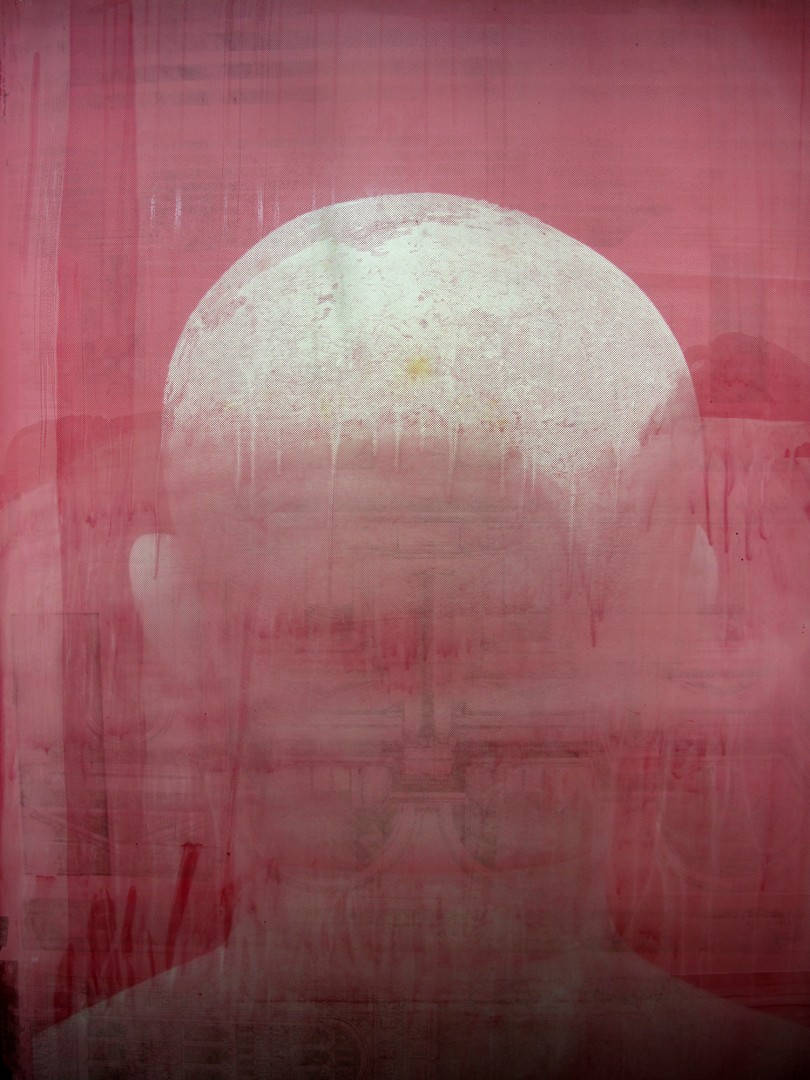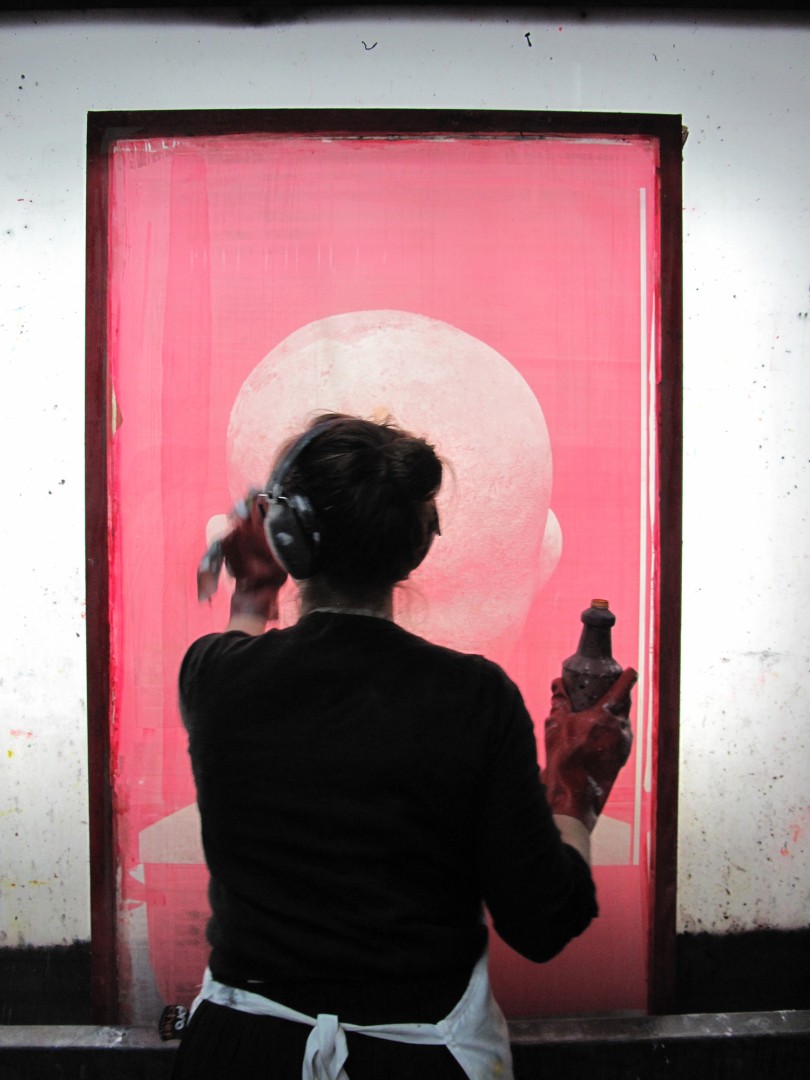Material Collision (staring together at the stars) Parts 1,2,3 : 2013
photographic screen prints on carborundum sandpaper
individual sheet dimensions 139 x 105 cm
individual framed dimensions 146 x 112 cm
overall dimensions 146 x 356 cm
Ed 3 + 1 AP
In 2010 I was in the audience of Hiroshi Sugimoto’s keynote lecture that opened the 17th Biennale of Sydney, The Beauty of Distance: Songs of Survival in a Precarious Age. While speaking about his ‘life project’ Seascapes, he said something that remains with me as an abiding fascination. Paraphrasing Sugimoto here, from my memory, he described his motivation for creating his Seascapes as a questioning of whether it is possible for a contemporary person to make an image that the ancients may have seen.
Three years later that thought played a principal role in my motivations for creating Material Collision (staring together at the stars) parts 1,2,3 in which I too have tried to create an image of what the ancients may have seen. Whereas Sugimoto turned to the horizon at sea, I turned to the night sky.
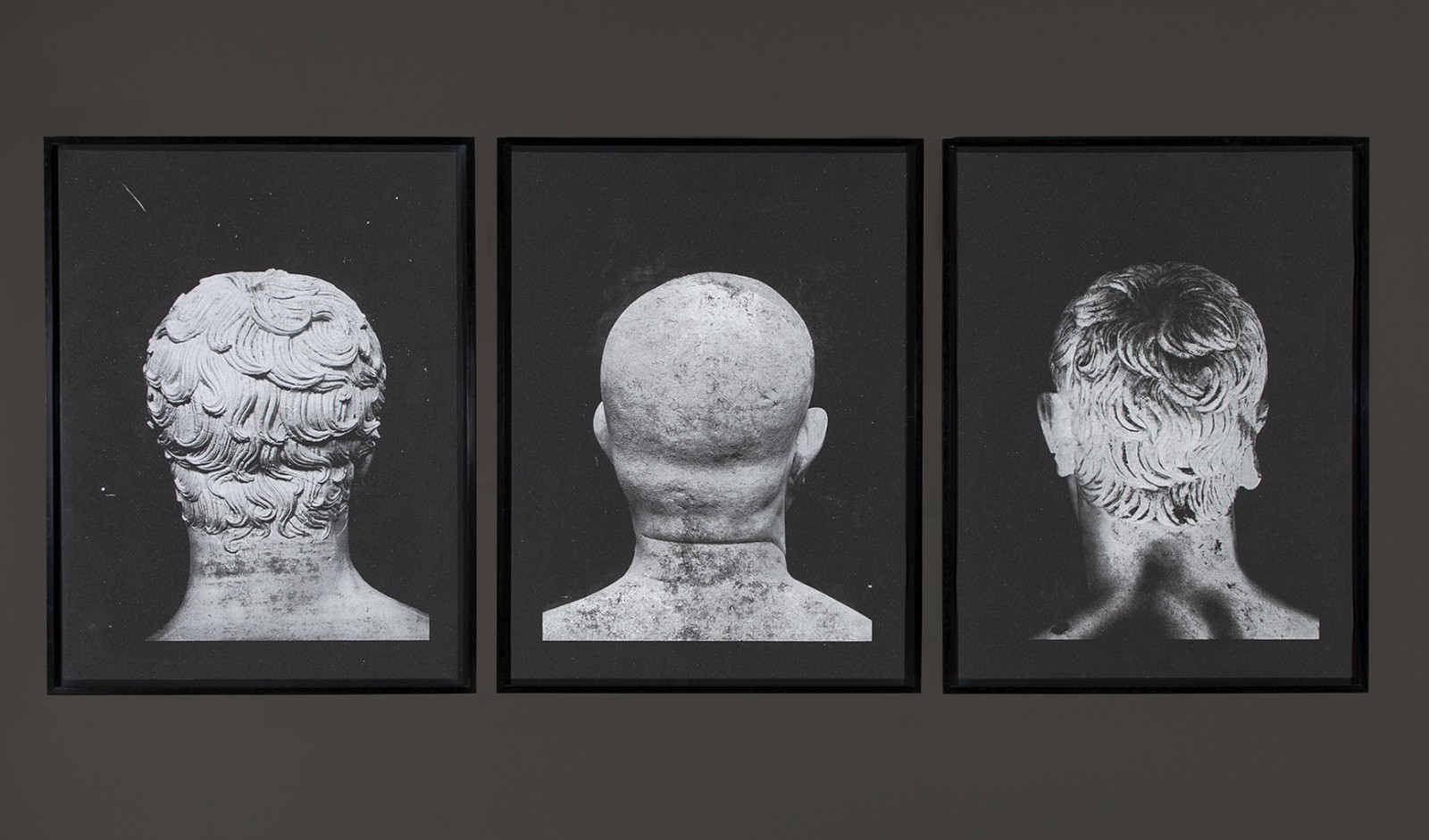
Comprising image details drawn from three late nineteenth century glass plate photographic negatives, screen-printed onto large sheets of carborundum sandpaper, this triptych sparkles softly like a night sky as it connects three distinct periods dispersed across a vast expanse of historical time. These are the period in which the roman sculptures (represented here) were made, ca 1st – 2 century CE. The period following their unearthing during which they were first photographed, ca 19th - 20th century CE. And the time in which I created this triptych, early 21st century CE.
The starry qualities of the triptych are difficult to capture in documentation images, it remains an experiential phenomenon. However, the scratches and pittings in the original glass negatives (that evidence the passage of time), have been transfered through the process of the negative's digitisation to the files that I used in the screen printing process. These marks (visible here), mingle with the visual effect created by the light refracting qualities of the silicon carbide particles which dust the surface of the paper.
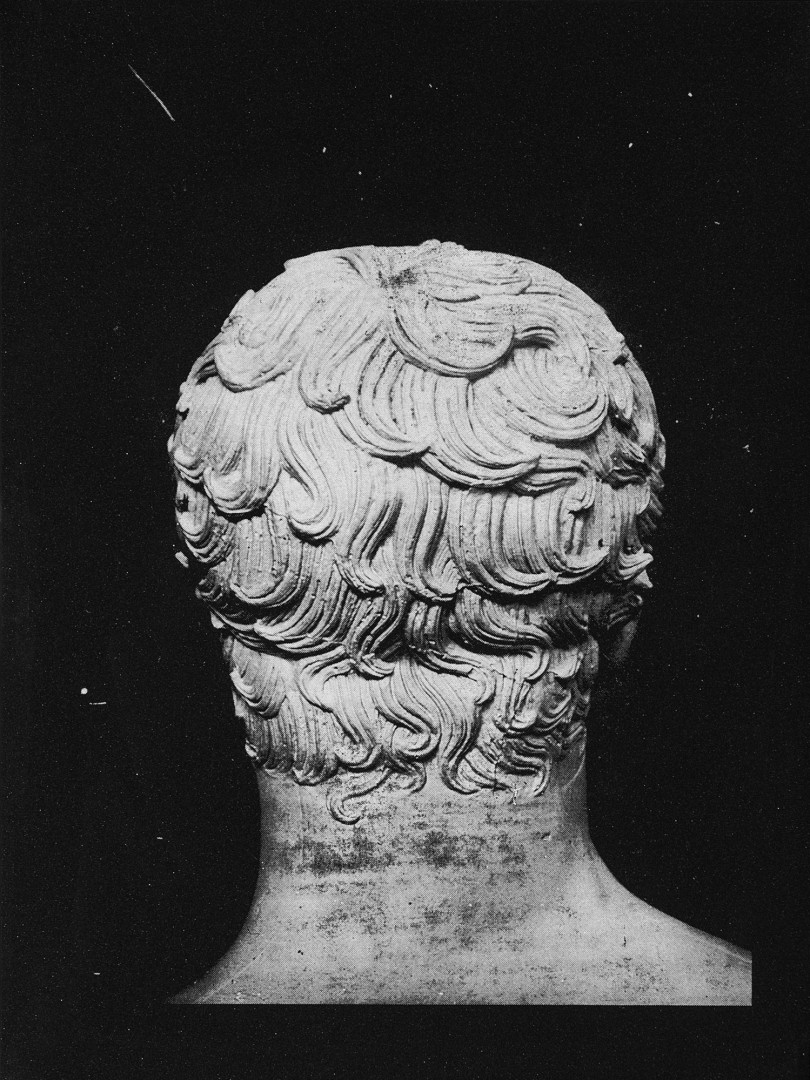
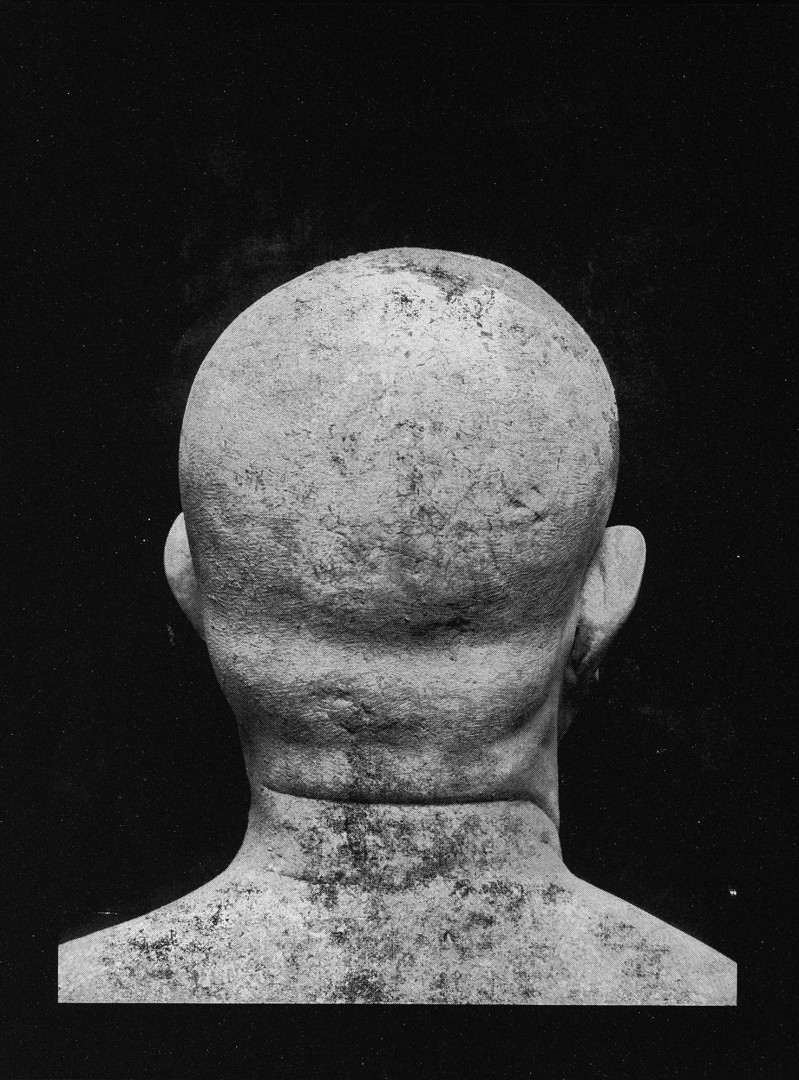
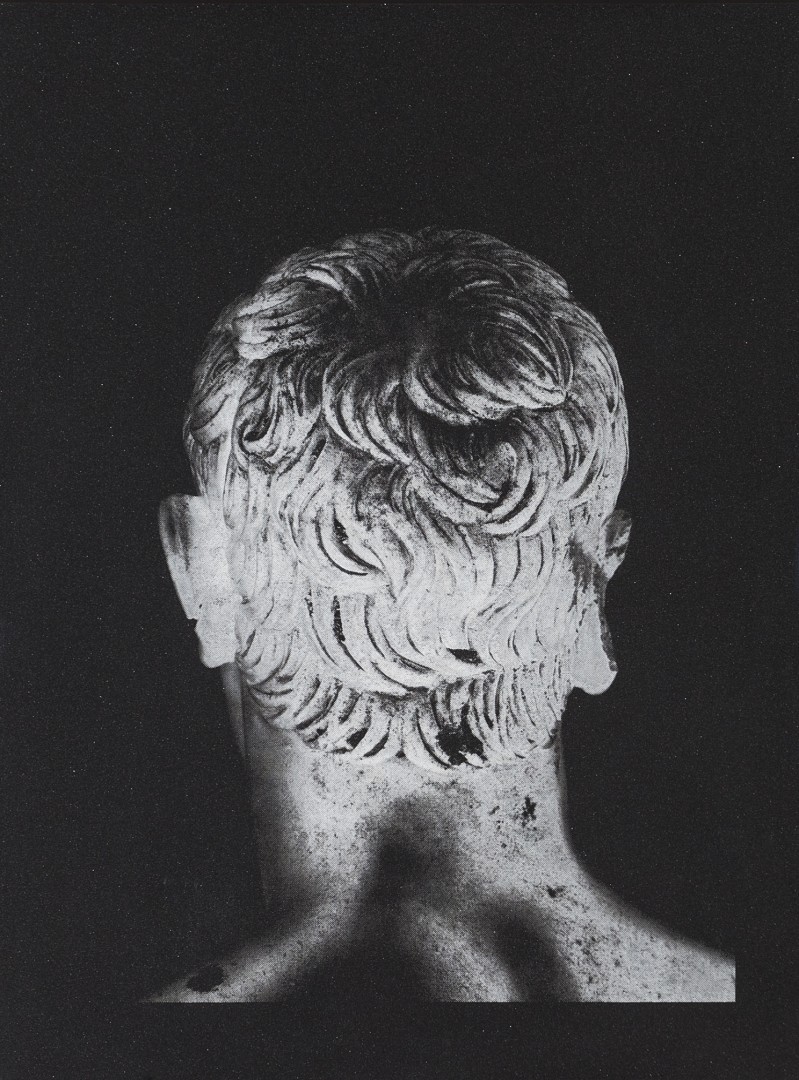
Sandpaper is a tool that has played a part in many traditional sculptural practices for a very long time. In this work the sandpaper maintains its association with histories of sculptural production (by association with the image subjects) whilst becoming conceptually and physically a part of the artwork.
This shift from being a tool to being conceptually and physically a part of the work merges with the essentiality of silicon as an ingredient to the materility of the glass plates (from which these images were sourced), and the surface onto which they are printed. The merging prompts a mode of thinking that proponents of Material Engagement Theory might identify as a form of material semiosis. In Material Engagement Theory the ‘meaning’ of a material emerges from the conceptual blending of the physical and the cognitive at our context specific engagement with it.
Here two materially and processually linked substrates (the delicately dimensional surface of the carborundum sandpaper and scratched and pitted small panes of ninteenth century glass), enter a materially semiotic exchange that, on a material register, futher extends the poetic dimensions of the work.
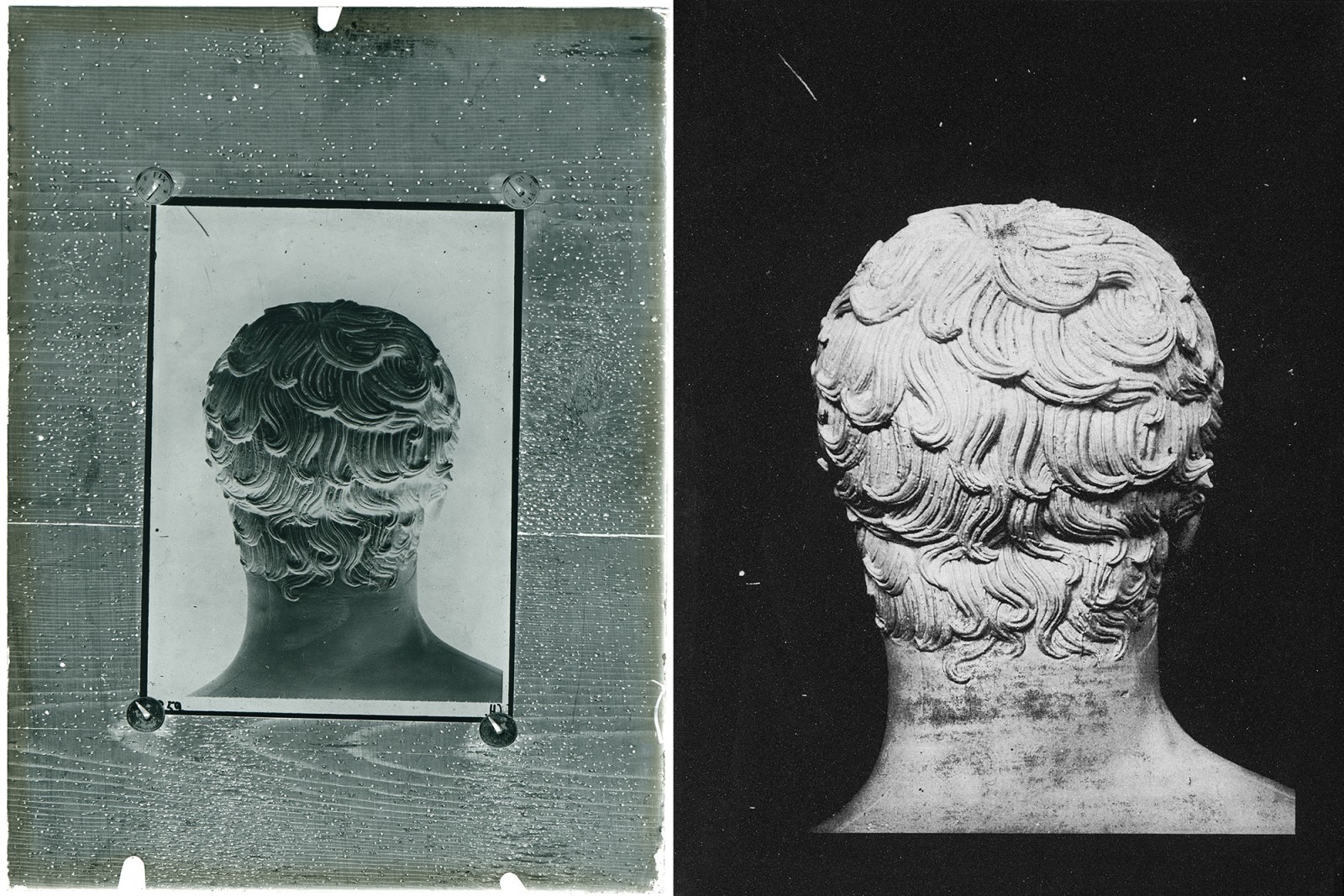
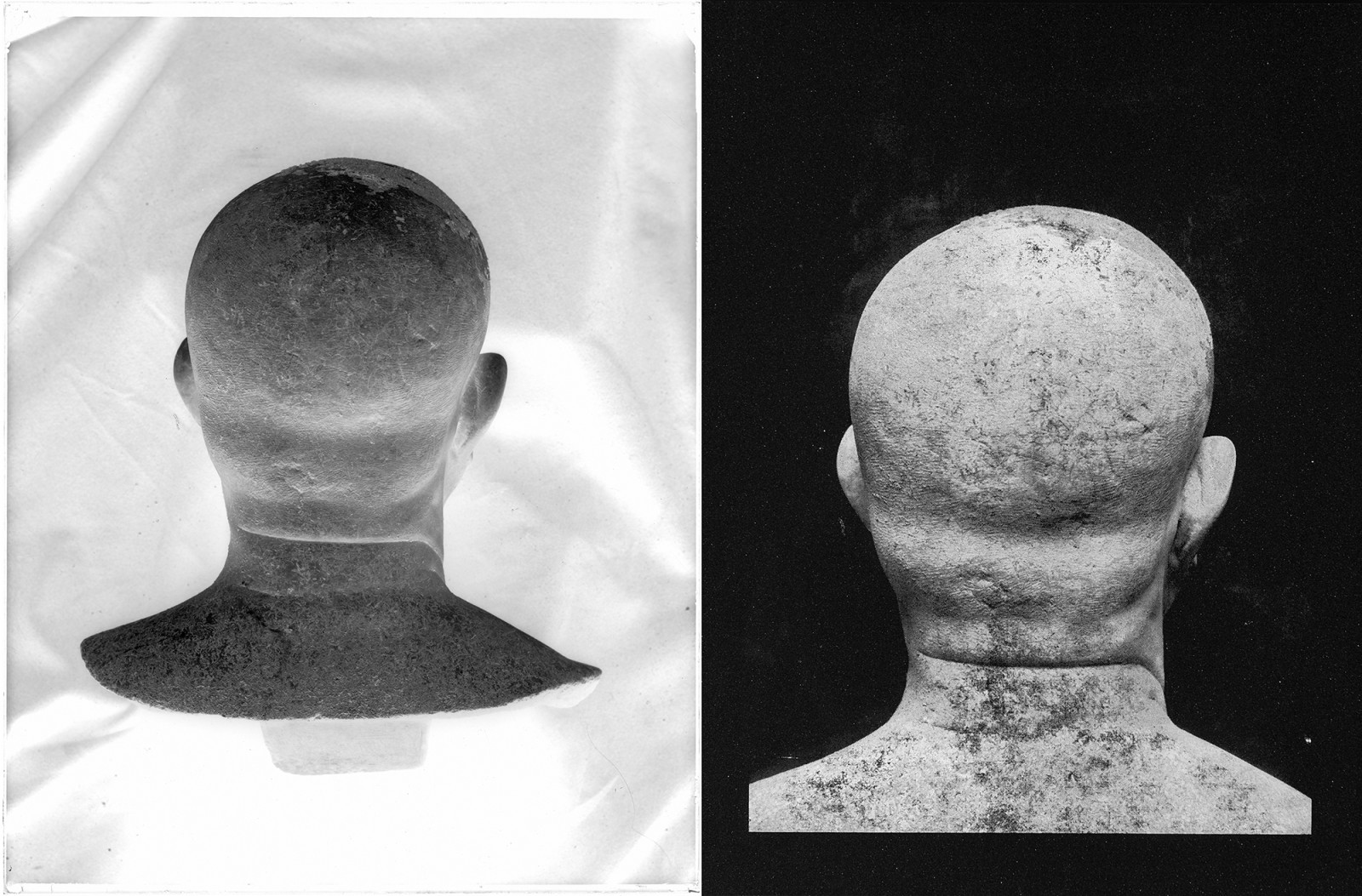
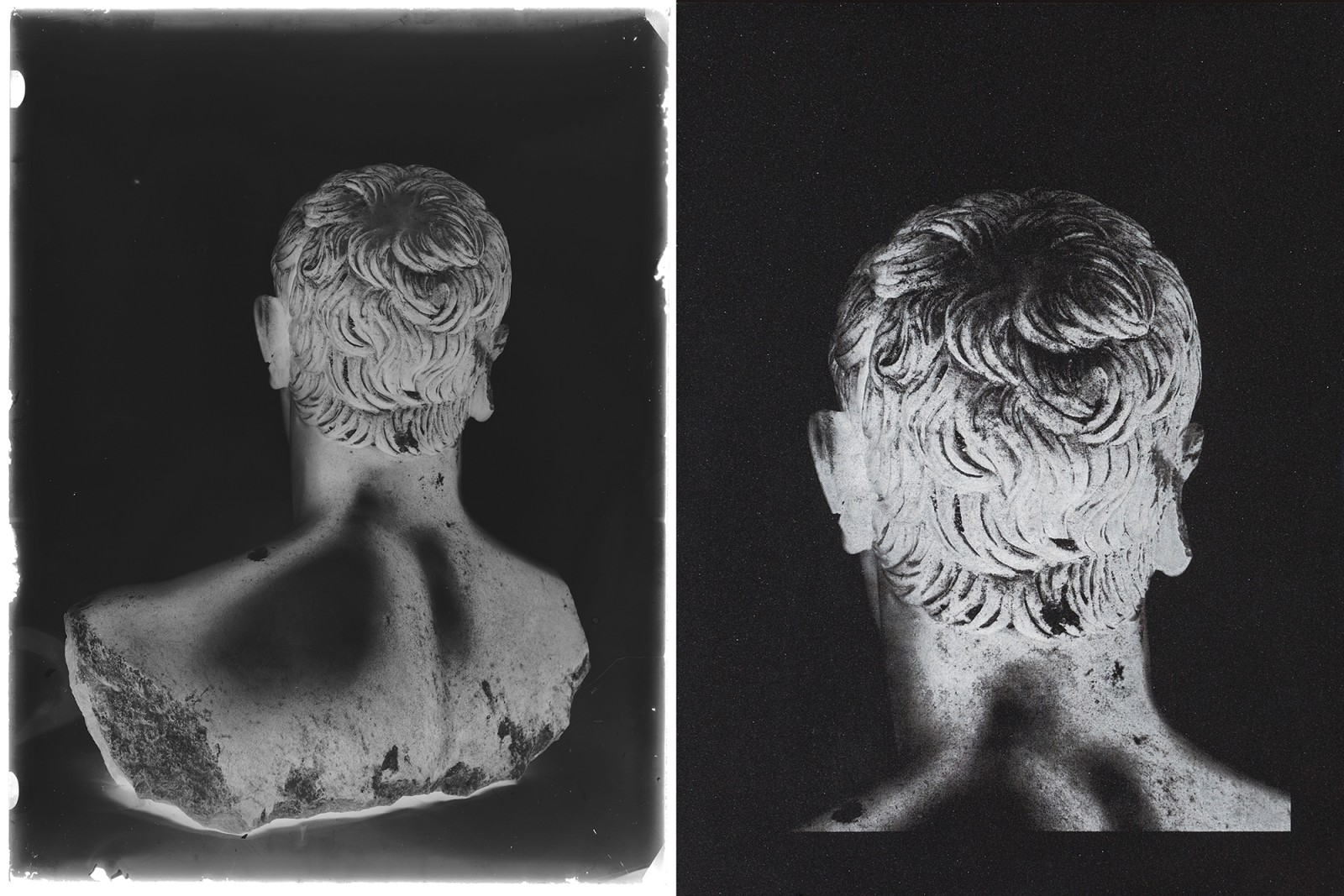
In this triptych we see the shoulders, necks, and the back of the heads of three male figures. Everything else is stripped away. We might consider the work as a set of three reverse portraits, or as a group portrait, or as a tableau in which we become another figure joining the group that is already staring together at the stars. In each of these possible readings (of which there are countless others) we experience a sense of the timeless intimacy of the human figure which is especially evocative in shared contexts. However, as we settle into the performative aspects and implications of the tableau reading, we gaze beyond the figures that stand before us, we gaze with them, and in doing so we gaze not at history, rather we gaze with history, at the stars, and that makes Material Collision (staring together at the stars) parts 1, 2, 3 ancient and contemporary.
Material Collision (staring together at the stars) parts 1,2,3 was commissioned by the National Gallery of Victoria and presented in the 2013 iteration of the exhibition Melbourne Now.
